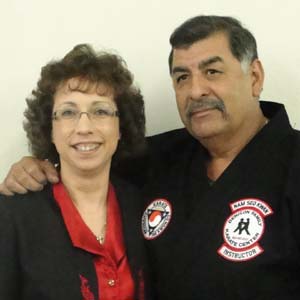
In 1956 a South Korean named Jhoon Rhee arrived in Texas and introduced America to the Korean martial arts. He taught the style Tang Soo Do. Since no one in this country had ever heard of the Korean arts, Mr. Rhee used the more popular name Karate. Mr. Rhee soon started using the term Tae Kwon Do. In 1962 he moved to Washington D.C. GrandMaster Rhee continues to teach and is recognized as the " Father of American Tae Kwon Do." GrandMaster Rhee's first American black belt was a Texan named Allen R. Steen who built the Lone Star state into one of the first strongholds of Karate in the U.S.A. Steen opened the first Karate school in Texas in 1962 in Dallas. Mr. Steen's reputation as a champion and instructor of champions in the 1960's and 70's was rivaled only by California's Chuck Norris (whom Steen defeated to earn the 1966 International Karate Championships). Steen, Norris, and other pioneers of the American Karate took bits and pieces of different styles and molded them into a uniquely American system of martial art. Martial Arts History: While there are many accounts of the history of the martial arts, they are often biased in favor of the particular style of the author. Although Korea has a long history of martial art practice, as do other Asian nations, Tae Kwon Do is actually a style created in the 1950's after the Korean War. China is usually considered the birthplace of the martial arts. An Indian Buddhist monk named Bodhidharma is said to have traveled to China around 525 A.D. Traveling monks introduced their methods into other countries. Karate History: Okinawa, a group of islands off the coast of Japan, is where Karate was born in the 17th century under the influence of Chinese monks. The fighting arts were originally known as "Okinawa Te" or "hand" but soon become known as "China-hand" or "kara-te." Some Okinawan schools added the use of farm implements as weapons since the government had outlawed the use of swords and knives. So, the sai, nunchaku, and bo became part of the Okinawan curriculum, today called "kobudo." About 1300 years ago the Hwa Rang warriors of Korea developed an unarmed fighting art known as Subak and later, Taekyon. In 1910 Japan overran Korea and outlawed Korean customs and martial arts. By the end of World War II Korea was liberated from the Japanese occupation by the USA and her Allies. Thousands came back home to openly practice both the traditional Korean systems and the other Asian styles. Tae Kwon Do History: In 1955 the leading masters met to try and unify the many schools under one name. Korean army general Choi Hong Hi (pronounced chay) suggested the name Tae Kwon Do (the "way of kicking and punching") and it was eventually accepted by many Korean teachers, including Jhoon Rhee. General Choi Hong Hi made up the first Tae Kwon Do training patterns or hyungs, also known by the Japanese term, kata. American Karate and Tae Kwon Do Organization: By 1976 GrandMaster Allen Steen retired from teaching the martial arts. One of Mr. Steen's original black belts, Mr. Keith Yates, formed the Southwest Tae Kwon Do Association (after Mr. Steen's original organization called the Southwest Karate Black Belt Association). Because the group had grown to include several styles and schools in several states, Mr. Yates changed the name of the association to the American Karate and Tae Kwon Do Organization (A-KaTo). Today the organization has three main purposes:
Instructors and schools within the A-KaTo maintain an eclectic but traditional approach to American Karate and American Tae Kwon Do. Keeping the emphasis on the ''art'' of the martial arts, this approach also incorporates techniques from several other styles such as aiki-ju-jutsu and kobudo. In fact, A-KaTo instructors can earn their black belt ranking in these two systems as well. Reprinted with permission (condensed) www.a-kato.org |




